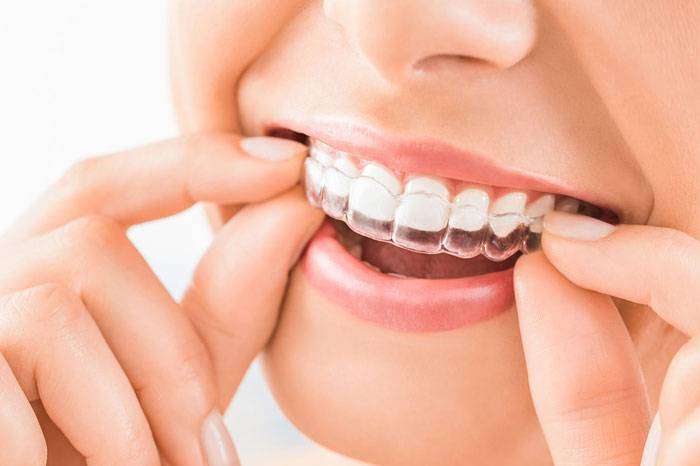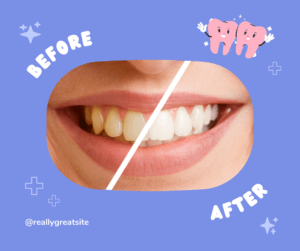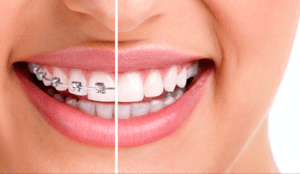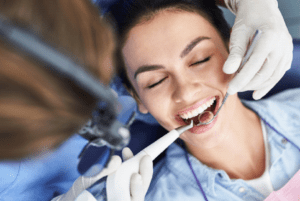As the demand for esthetic treatments are increasing, more people are seeking alternatives to fixed orthodontic appliances. Clear aligners are an esthetic and comfortable option for orthodontic treatment and have gained immense popularity over the last decade.
WHAT ARE CLEAR ALIGNERS?
Clear aligners are orthodontic devices that are a transparent, plastic form of dental braces used to adjust teeth.
Clear Aligners are transparent trays made of special material which are used to straighten teeth just like braces.
Invisalign, a Removable Appliance: The Invisalign Technique uses 3D computer imaging technology to depict the complete treatment plan from the initial position to the final described position from which a series of custom-made, clear aligners are produced. Each aligner moves teeth incrementally and is worn for about weeks, then replaced by the next set of aligners in series until the final position is achieved. The aligners are removable and are made of 0.75mm-thick polyurethane. Each aligner is programmed to produce a precise movement on a tooth of about 0.15-0.25mm. Invisalign applies intermittent forces to the teeth just as do most of the active removable appliances. Orthodontic treatment with Invisalign aligners could lead to root resorption as any other orthodontic treatment.
A review by Rossini et al. demonstrated that Invisaling is effective for simple malocclusion treatment.
Invisalign is indicated in cases of mild crowding (1-6mm), mild to moderate spacing (1-6mm), nonskeletal constricted arches, and relapse after fixed appliance therapy. Arch expansion is possible with invisalign and may be required as a percieved need to improve the esthetics of the smile by broadening the dental arches or as a mechanism to create space for resolution of crowding. It can also be used as a way of correcting dentoalveolar posterior cross bite.
The Invisalign system has evolved over the last 16years, and various strategies have been developed to better manage the vertical dimensions such as dental deep bite and open bite within mild to moderate range.
It has been suggested that teeth moved with aligners did not undergo the typical stages of movement, as described by Krishnan and Davidovitch, because of the intermittent forces applied by the aligners. However, light continuous orthodontic forces seem to be perceived as intermittent by the periodontium, and orthodontic intermittent forces are able to produce orthodontic tooth movement with less cell damage in the periodontium. Treatment with invisalign provide better esthetics and comfort and lesser plaque accumulation, and is more gentle for gingival tissue than fixed orthodontic appliances.
It is easier to maintain oral hygiene during treatment with invisalign as toothbrushes and dental floss can access all the tooth surfaces and interproximal spaces.20 Removability and small size of invisalign resulted in superior functional and psychological differences compared with fixed appliane, as well significantly reduced pain.3 Invisalign are also very effective for the treatment of craniomandibular disorder patients when combined with splints.
EVIDENCE BASED PRACTICE
Orthodontic Treatment with Clear Aligners and The Scientific Reality Behind Their Marketing: A Literature Review
By Ipek Tamer
Time Efficiency of Clear Aligners
Time efficiency is an important outcome to consider for private practice orthodontists because spending less time with one patient in the clinic and completing the treatment earlier both pleases the current patient and allows the orthodontist to treat more patients. Bushang et al. investigated the difference between conventional fixed appliances and Invisalign® aligners in terms of total treatment time and chair time in non-extraction patients. Total treatment time was found to be 67% lesser in the Invisalign® group. The short duration of treatment with aligners was asserted with the absence of the finishing and detailing phase, which can take up to 6 months with fixed appliances. On the contrary, in extraction cases, Invisalign® treatment duration is 44% longer as compared to fixed-appliance treatment. Patients with good compliance are required to visit the orthodontist in 10–12 week intervals in aligner therapy, whereas 4–6 week intervals are inevitable when treating with fixed appliances. Therefore, more appointments are required in fixed appliances therapies. Also, the chair time is found to be significantly shorter in clear aligners group, allowing the clinician to treat more patients.
- Clear aligners provide an esthetic and comfortable option to conventional fixed mechanics.
- Obtaining periodontal health is easier in patients treated with clear aligners and less white spot lesions develop during the treatment.
- Clear aligners can be used in mild to moderate crowding cases but caution must be exercised in complex cases.





